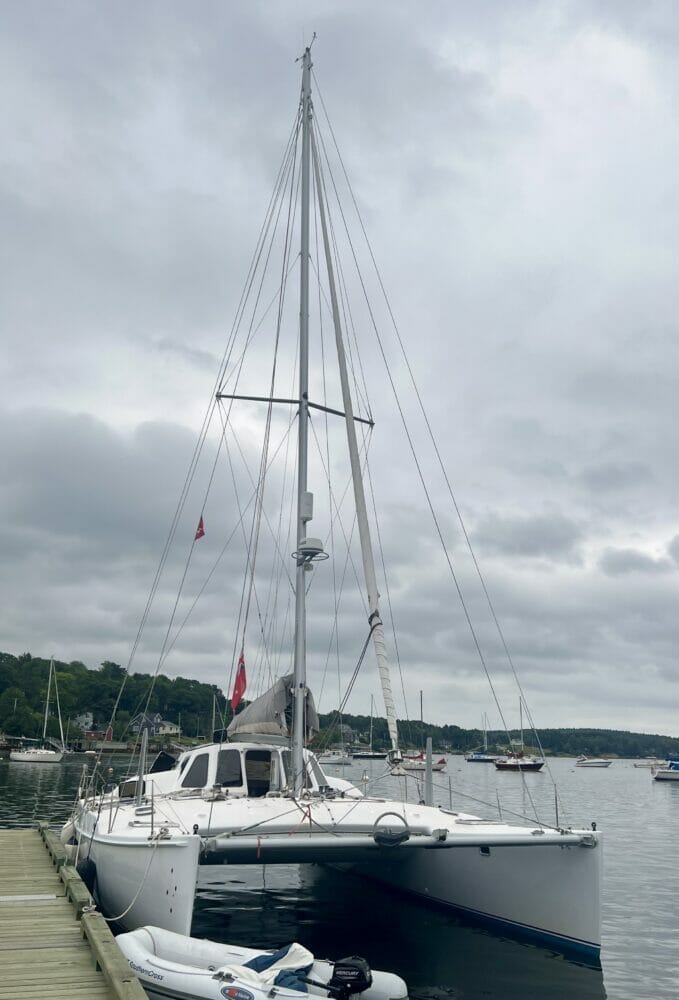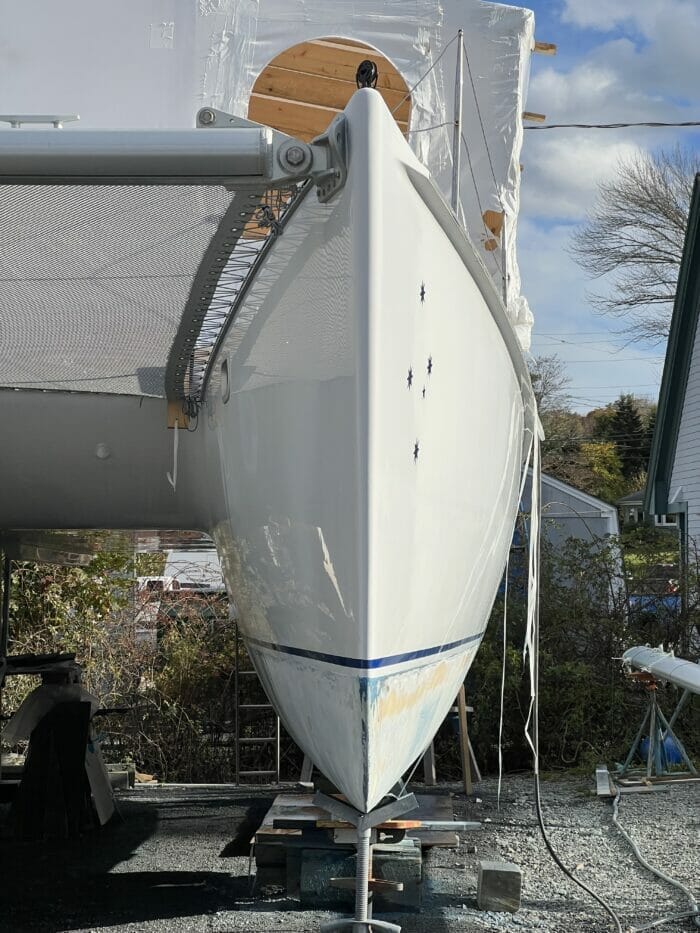
People often think that I must be a multihull hater, just because I own a monohull.
Not true, I love well-designed catamarans (and tris, too) like this way-cool Chris White 42.
But here’s the key point:
To be safe, and deliver on their speed potential, cats must not be overloaded.

Check out how thin the hull of this same cat is. It won’t take a lot of weight to push this hull dangerously low in the water.
Overload this boat, and she won’t be much faster than a mono, and, counterintuitively, will be much more likely to end up upside-down than if kept light.
So to have a safe cruising cat, and to be able to carry a reasonable load of cruising comforts, we will often need a bigger cat than we might at first expect.

That’s very true. To flesh that out with some numbers FYI, our 50 foot performance designed cat has an immersion rate of about 300 kg/cm, or for the metrically challenged, about 1,650 pounds per inch of sinkage. So from our DWL light displacement we only have about 3 inches of additional immersion before the wetted surface increase will start to cause light air performance to drop off due to hull parasitic drag.
And our hull design, particularly the stern “hydrodynamic exit flow” is pretty slippery, so for the charter cats that have what I call bathtub hull shapes, it is much, much worse. Sure, they can carry alot of gear, but need correspondingly bigger rigs and sail plan to be able to sail at all. And when the winds are below about 10 knots, they’re burning diesel.
Hi Rob,
Good data, thanks. Great to see a boat owner who actually knows the immersion rate and thinks about it!